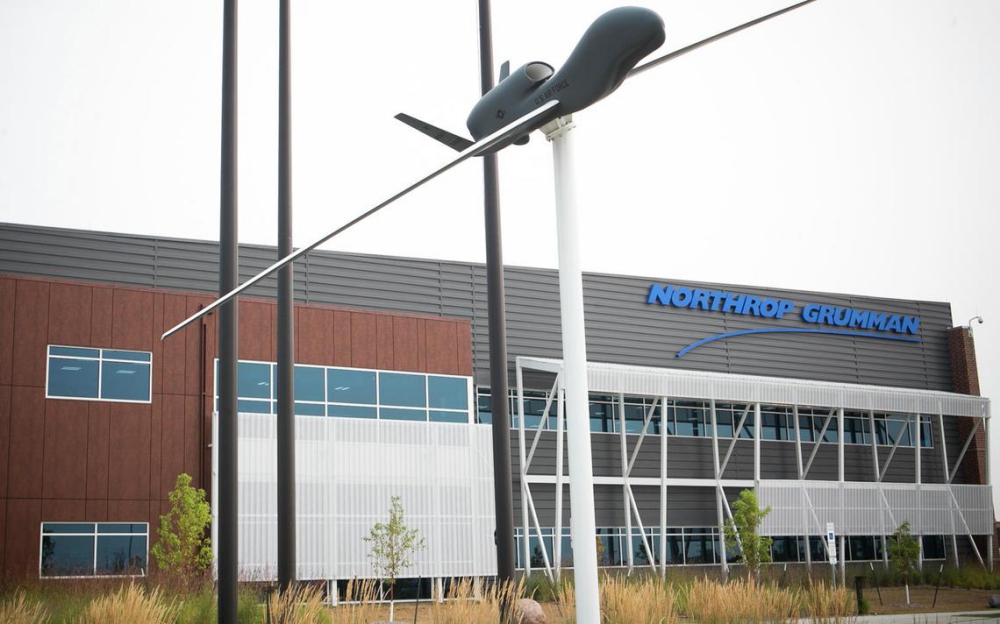recently hired a dozen interns and full-time employees at its Grand Sky location, to help handle an increased workload brought on by a recently opened 35,000-square-foot hangar.
In that hangar are new unmanned aerial systems, Firebirds, with commercial, civil and military capabilities. To find those new employees, Northrop turned to its partnership with local universities.
“We get some of the most phenomenal interns that I’ve ever had in my entire career out of the local community,” said Mike Fridolfs, Northrop Grumman’s Grand Sky site director. “Brilliant, brilliant students.”
Many of those interns come from UND, Northland Community & Technical College and some come from NDSU or other regional universities. More than 90% of them become full-time employees at a facility that takes workers out of the office and puts them next to the product.
“There’s not a lot of places where you can be an engineer and also look out the window of the facility and actually see and touch the items that you’re working on,” Fridolfs said.
Those new interns and engineers may wind up working with the Firebird drone, or they may work on other projects, such as software design. The Grand Sky facility acts as a training center for pilots, operators and maintainers, as well as operations and mission analysis. With the completion of the new hangar, workers also can focus on flight operations — drones taking off from the site.
Last year, the facility successfully completed a flight control test of a NASA Global Hawk drone: It took off in California and was remotely piloted from Grand Sky. The recent addition of the Firebird, which undertook a flight operation at Grand Sky on Wednesday, July 22, is used to assist the company in its mission to integrate drones into the national airspace and advance work on flying beyond visual line of sight.
The Firebird unmanned aerial vehicle comes in a variety of configurations. It can be operated remotely, or, after a few hours of system changes, can be flown by a pilot. The drone is versatile and can be operated by a small crew. It only takes two people to reconfigure from manned to unmanned flight. Aside from military uses, the drone can be used to map floodplains, detect wildfires and monitor infrastructure.
“We’re flying in the beyond visual line-of-sight configuration, which is the primary usage of the Firebird,” said Jon Haun, director of the Firebird production team. “The ability to be optionally manned allows for additional flexibilities as far as being able to transit national airspace.”
Continued growth and the jobs that come with it are, in part, due to the partnerships the company has made here, including with the Northern Plains UAS Test Site and local universities. Together, they form a network that channels students into jobs to do the work necessary to integrate large unmanned aerial vehicles into the national air space. It is a community that Fridolfs has not seen anywhere else.
“You look at autonomous systems throughout the world, and this ecosystem here really does allow us to strengthen that state-of-the-art system,” he said.
For Northrop Grumman, it’s the skies and beyond. The company has provided a component that will be used in NASA Jet Propulsion’s Perseverance Mars Rover. The launch is expected to happen by mid-August. The rover will land on Mars in February 2021, to study the planet’s habitability and search for signs of past life. The rover also will collect surface samples and test oxygen production in the atmosphere. The component will provide data to the ground mission and help navigate the planet’s surface.
The unit, called an inertial measurement unit, has been used on previous Mars missions, including the rovers Spirit and Opportunity in 2003 and Curiosity in 2012. That rover is still in operation eight years after its two-year mission.
Source: Grand Forks Herald

